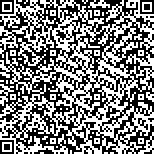Abstract:The torpedo’ s passive localization and explosion point control method of anti-torpedo hovering depth charge is discussed. Firstly, the line spectrum of torpedo-radiated noise is detected and the direction of target is located with vector hydro- phone. Secondly, the target motion analysis (TMA) method is adopted to predict the target’s nearest distance based on the frequen- cy and bearing variation of the high speed target. Finally, if the distance is less than the destruction radius of the explosive, the ex- plosion control signal is given to realize explosion point control. Computer simulations validate the effectiveness of the method.


